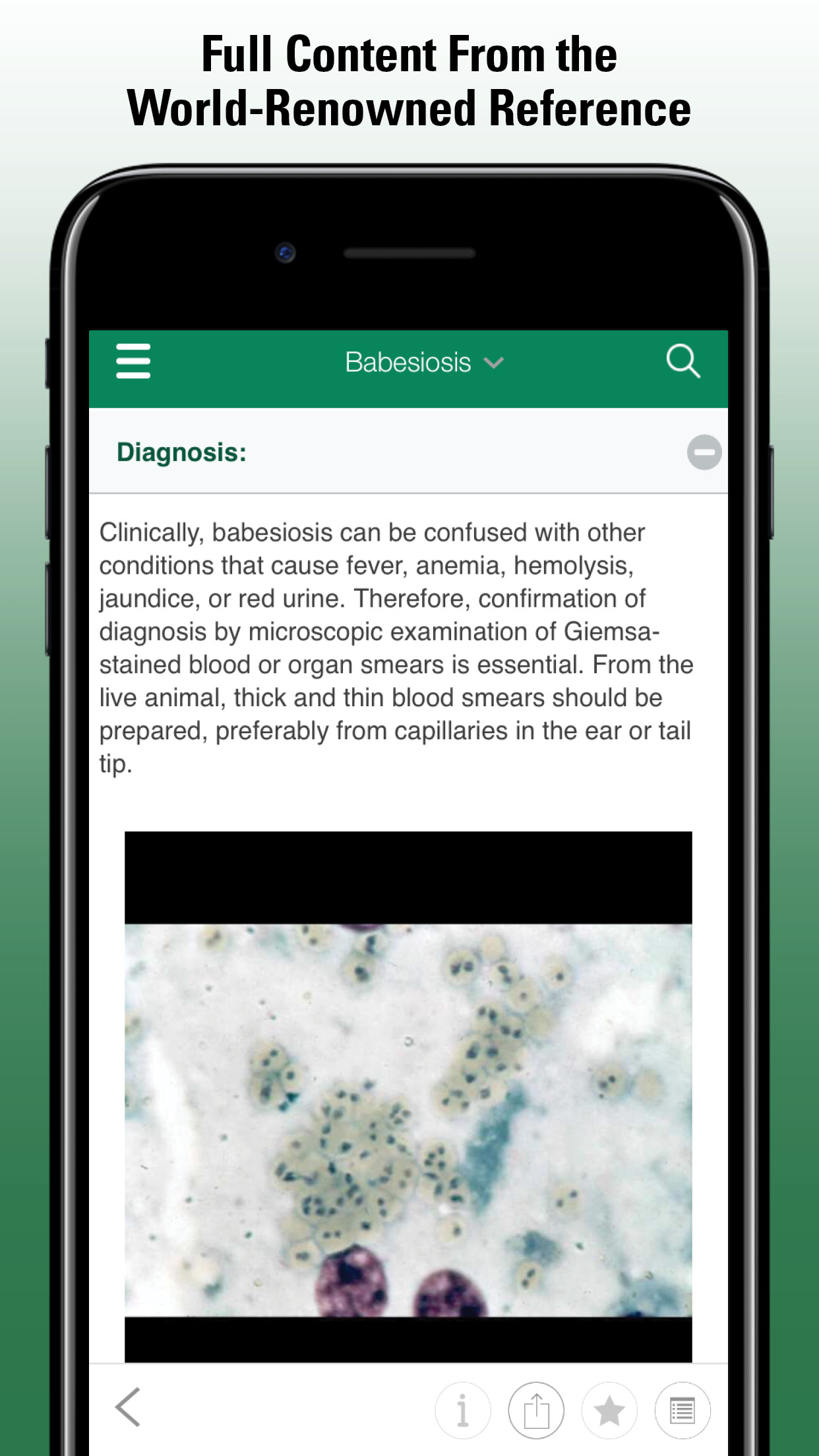Overview of Leishmaniosis
(Visceral leishmaniasis)
- Leishmaniosis
- Overview of Leishmaniosis
Leishmaniosis is a disease caused by protozoan parasites of the genus Leishmania and transmitted through the bites of female phlebotomine sand flies. More than 23 species of Leishmania have been described, most of which are zoonotic. The most important Leishmania parasite to affect domestic animals is L infantum, also known as L chagasi in Latin America. Dogs are the main reservoir host for human visceral leishmaniosis caused by L infantum, and the disease is potentially fatal in dogs and people. Because the internal organs and skin of the dog are affected, the canine disease is termed viscerocutaneous or canine leishmaniosis. Cats, horses, and other mammals can be infected by L infantum or other Leishmania species. The disease in cats is rarer than in dogs and may manifest in cutaneous or visceral organs. L braziliensis, the cause of tegumentary canine leishmaniosis, is widespread in regions of South America and may geographically overlap with L chagasi.
Canine leishmaniosis is a major zoonosis endemic in >70 countries. It is prevalent in southern Europe, Africa, Asia, South and Central America, and sporadically in the USA. It is also of concern in nonendemic countries where imported disease constitutes a veterinary and public health problem.
Transmission:
Leishmania is a diphasic parasite that completes its life cycle in two hosts: a sand fly that harbors the flagellated extracellular promastigote form and a mammal in which the intracellular amastigote parasite form develops.
Transmission is a complex process that requires special adaptation between the sand fly host and the particular Leishmania species transmitted. There are numerous species of sand flies, only a minority of which are competent vectors of Leishmania. Dogs with or without clinical signs are infectious to sand flies and may transmit leishmaniosis. Congenital vertical transmission of canine leishmaniosis from an infected dam to its offspring has been reported but appears to be uncommon. Transmission by transfusion of blood products from infected dogs has been shown to cause infection in recipients. Direct dog-to-dog transmission by contact has been suggested as a mode of disease transmission in an effort to explain the spread of infection among kenneled Foxhounds in the USA in the absence of proven sand fly vectors. At present, the validity of direct transmission is unknown.
Clinical Findings:
Dogs are infected by L infantum promastigotes deposited into the skin via the bites of infected sandflies. The promastigotes invade host macrophages and replicate as intracellular amastigotes. The immune responses mounted at the time of infection and thereafter appear to be the most important factor in determining whether a persistent infection will develop and progress from subclinical to clinical disease. The incubation period may last months to years, during which the parasite disseminates from the skin throughout the host’s body (primarily to the hemolymphatic system organs). Age, breed, host genetics, nutrition, concurrent diseases, and other factors may also influence the progression from infection to clinical disease.
Canine leishmaniosis is a multisystemic disease with a highly variable spectrum of immune responses and clinical manifestations. In endemic areas, the prevalence of dogs carrying infection is much higher than those demonstrating clinical disease. Clinical disease is associated with a marked antibody response that does not confer protection. In fact, immune-mediated mechanisms are responsible for much of the pathology in canine leishmaniosis.
The typical history reported by owners of dogs with clinical disease due to L infantum includes the appearance of skin lesions, ocular abnormalities, or epistaxis. These are frequently accompanied by weight loss, exercise intolerance, and lethargy. The main physical examination findings are dermal lesions in 80%–90% of the dogs, lymphadenomegaly in 62%–90%, ocular disease in 16%–81%, splenomegaly in 10%–53%, and abnormal nail growth (onychogryphosis) in 20%–31%. Other clinical findings may include polyuria and polydipsia due to kidney disease, vomiting, colitis, melena, and lameness due to joint, muscle, or bone lesions. The sole presenting signs of disease could be epistaxis, ocular abnormalities, or manifestations of kidney disease without dermal abnormalities. The dermal lesions associated with canine leishmaniosis include exfoliative dermatitis, which can be generalized or localized over the face, ears, and limbs. Ulcerative, nodular, or mucocutaneous dermatitis are also seen. Cutaneous ulcers over the ears or other locations may be associated with considerable bleeding. A mild form of papular dermatitis has been reported in dogs with no other signs of disease. Ocular or periocular lesions include keratoconjunctivitis and uveitis.
Clinical laboratory findings include mild to moderate nonregenerative or more rarely regenerative anemia in 60%–73% of the dogs; thromobocytopenia is less common. The most consistent serum biochemistry findings in dogs with clinical canine leishmaniosis are serum hyperproteinemia with hyperglobulinemia and hypoalbuminemia, frequently expressed by a decreased albumin:globulin ratio. Marked hyperglobulinemia with no apparent cause in dogs from Leishmania-endemic regions should suggest possible canine leishmaniosis. Grossly increased activities of liver enzymes or azotemia are found in only a minority of infected dogs. Some degree of renal pathology is present in most dogs with canine leishmaniosis. Subsequent renal failure due to immune-complex glomerulonephritis may eventually develop and is believed to be the main natural cause of death. The presence of proteinuria should be evaluated and kidney disease staged with measurement of the urine protein:creatinine ratio.
Lesions:
The typical histopathologic finding in canine leishmaniosis is granulomatous inflammation associated with a variable number of Leishmania amastigotes with macrophages. Protective immunity against Leishmania parasites is mediated through CD4+TH cells and the activation of a complex cascade of cytokine mediators. Circulating immune complexes and antinuclear antibodies can be detected in animals with canine leishmaniosis, and deposition of immune complexes in the kidneys, blood vessels, and joints occurs as infection progresses. Glomerulonephritis associated with the renal immune complexes is a hallmark of this disease. Renal pathology, including glomerulonephritis and interstitial nephritis, is evident by histopathology, even if not manifested clinically in most dogs infected with L infantum.
Diagnosis:
Diagnostic tests include a CBC, biochemical profile, urinalysis, and one or more specific tests to confirm infection. Quantitative serology is useful, especially when compatible clinical signs are present. High antibody titers are found in 80%–100% of dogs with clinical disease and could be conclusive of a diagnosis. Various quantitative serologic methods to detect anti-Leishmania antibodies have been developed, including indirect immunofluorescence assays, ELISA, and direct agglutination assays. Purified recombinant antigens such as rK39 are also used to detect leishmaniosis in dogs and people. Serologic cross-reactivity with trypanosomes may be found in regions where Trypanosoma infection is prevalent, particularly with T cruzi in Latin America.
Detection of parasite-specific DNA by PCR allows sensitive and specific diagnosis of infection. Several different assays with various target sequences using genomic or kinetoplast DNA (kDNA) have been developed for canine leishmaniosis. PCR can be performed on DNA extracted from tissues, blood, or even from histopathologic specimens. Assays based on kDNA are the most sensitive for direct detection in infected tissues. Bone marrow, lymph node, conjunctival swabs, or spleen samples are superior to blood with most of the current PCR techniques.
Leishmania amastigotes can be demonstrated by cytology from lymph nodes, spleen, skin impressions, bone marrow, or joint fluids stained with Giemsa stain or a quick commercial stain. Detection of amastigotes by cytology is sometimes unrewarding because of a low number of detectable parasites, even in dogs with full-blown clinical disease. Leishmania parasites may also be viewed in histopathologic formalin-fixed, paraffin-embedded biopsy sections of the skin or other infected organs. Identification of parasites within tissue macrophages may be difficult; immunolabeling with immunohistochemical staining can verify the presence of Leishmania in the tissue.
Detection of infection in dogs with no clinical disease for purposes such as importation to nonendemic countries or use as blood donors may require PCR, which is the most sensitive diagnostic technique. Cross-sectional studies of dog populations in highly endemic areas have shown that infection rates can reach 65%–80%. Typically, only approximately 10%–13% manifest clinical signs of disease, 26% are seropositive and include sick and subclinically infected dogs, and an additional 40%–60% are carriers positive only by tissue PCR.
Treatment:
The main protocol used for treatment of canine leishmaniosis includes N-methylglucamine antimoniate (not approved for use in dogs in the USA) at 75–100 mg/kg, SC, for 4–8 wk combined with allopurinol (10 mg/kg, PO, bid, for 6–12 mo or longer as needed). Allopurinol may also be used as a single therapeutic agent at the same dose. Miltefosine (not approved for use in dogs in the USA) at 2 mg/kg/day, PO, for 4 wk can also be combined with allopurinol (10 mg/kg, PO, bid) as an alternative to N-methylglucamine antimoniate. Treatment frequently achieves only temporary clinical improvement in dogs and often does not eliminate the parasites. Treated dogs can remain carriers of infection and may relapse. They may remain infectious to sand flies. Stopping treatment with allopurinol is recommended only when clinical signs disappear, hematologic and serum biochemistry abnormalities return to normal, and the animal becomes seronegative by a quantitative laboratory serologic test.
Specific repellent topical insecticides effectively reduce sand fly bites and disease transmission. A deltamethrin-impregnated collar and a spot-on formulation of permethrin and imidacloprid have been shown to confer protection against sand fly bites. The application of protective insecticides is recommended for dogs in Leishmania-endemic areas, dogs traveling to sites of infection, and infected dogs (to reduce potential transmission). Purified-fraction commercial vaccines against canine leishmaniosis are marketed in Europe and Brazil, and other vaccines are under development.
Zoonotic Risk:
Human visceral leishmaniosis caused by L infantum is a serious public health problem in areas where canine leishmaniosis is endemic and dogs are the main reservoir of infection. It is mostly a disease of young children. Malnutrition has been recognized as a risk factor and may explain why this disease is more prevalent among children in poor countries than among those in affluent ones, despite high prevalence rates in the canine populations. Human disease is also prevalent in immunosuppressed individuals; HIV patients are the predominant risk group for human leishmaniosis in southern Europe. HIV and leishmaniosis coinfection has been reported from >33 countries worldwide and does not respond well to therapy. Efforts to control canine leishmaniosis and the human disease in endemic areas focus on disrupting the transmission of infection and preventing canine infection at the population level.
Resources In This Article
- Leishmaniosis
- Overview of Leishmaniosis




